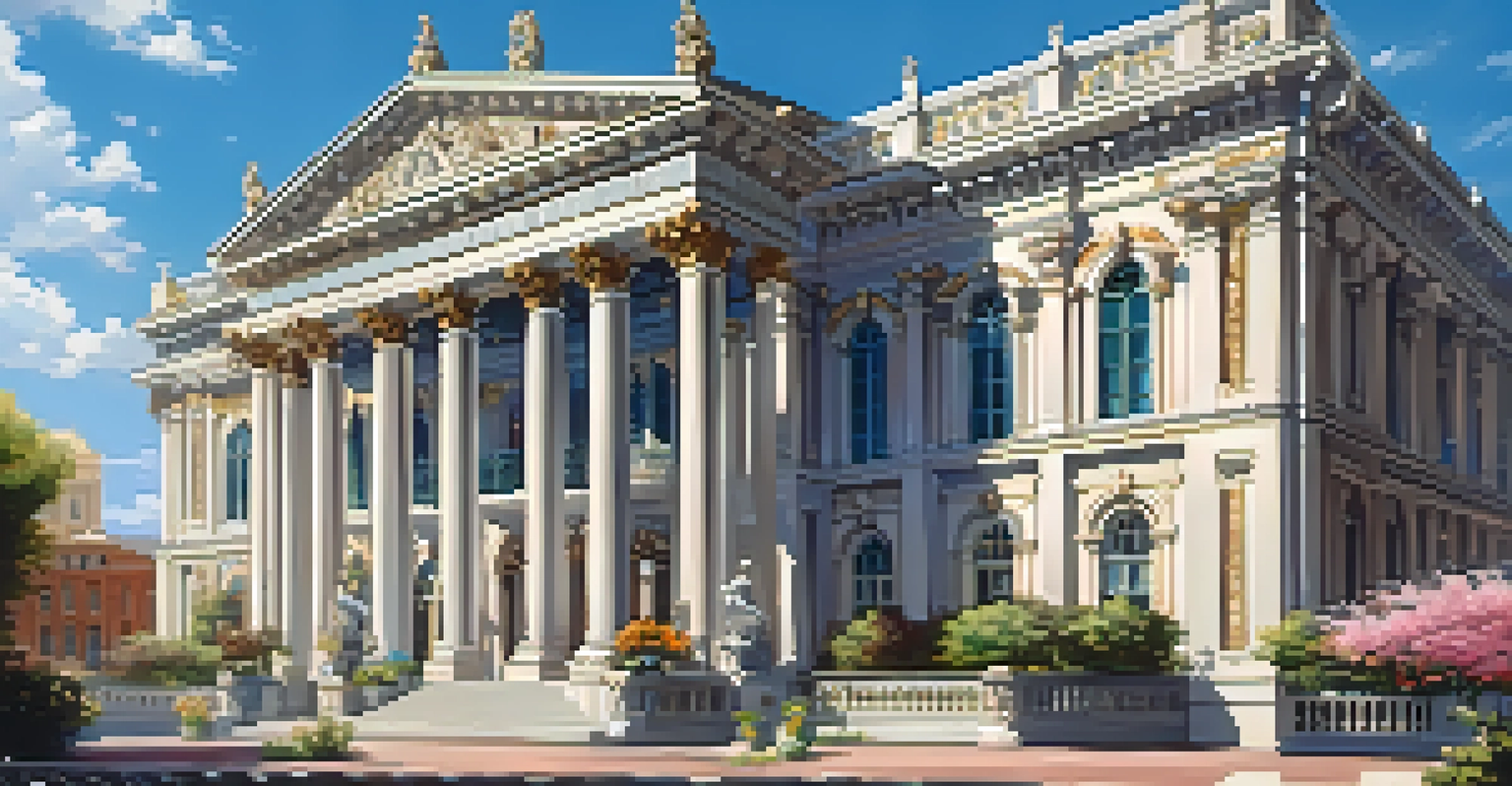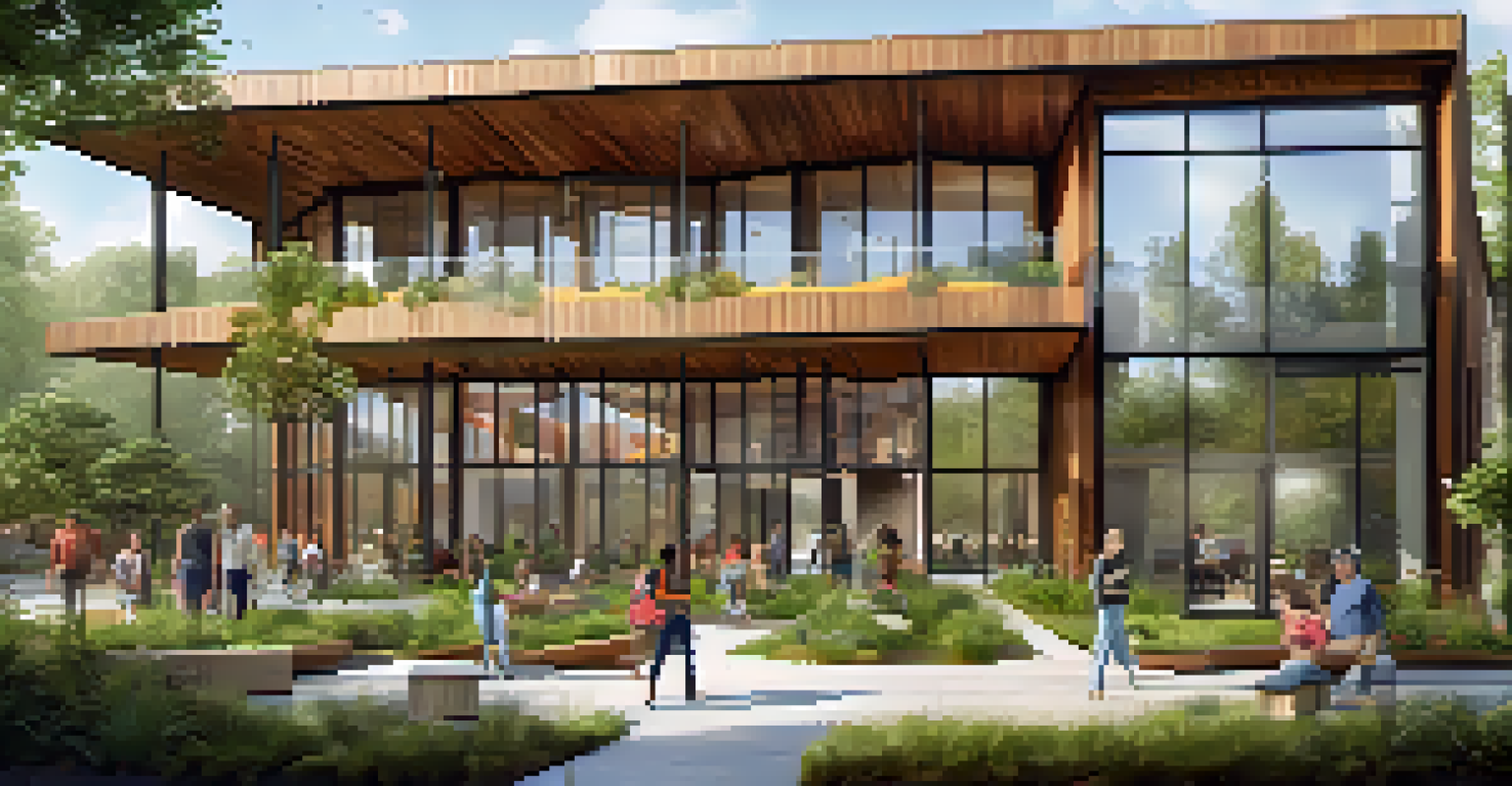Architectural Styles: From Beaux-Arts to Modernism in St. Louis

Introduction to St. Louis's Architectural Landscape
St. Louis boasts a diverse architectural heritage that mirrors its vibrant history. From grand public buildings to charming residential homes, each structure tells a story of the city’s evolution. This article will explore architectural styles ranging from Beaux-Arts to Modernism, highlighting their significance and impact on St. Louis's skyline.
Architecture is the reaching out for the truth.
Understanding these styles not only enriches our appreciation of the city but also reveals the cultural shifts that influenced their development. For example, the opulence of Beaux-Arts architecture emerged during a time of economic growth, while Modernism arose in response to societal changes. Let’s embark on this journey through time and design, starting with the ornate Beaux-Arts.
As we delve into each style, we’ll see how they reflect both global trends and local adaptations, making St. Louis a unique architectural tapestry.
Beaux-Arts: Grandeur and Elegance
The Beaux-Arts style, characterized by its grandeur and elaborate details, flourished in the late 19th and early 20th centuries. St. Louis showcases this style in iconic buildings like the St. Louis Public Library and the Missouri State Capitol, both of which feature classical elements like columns and intricate sculptures. These structures were designed to evoke a sense of pride and permanence in a rapidly growing city.

The Beaux-Arts movement was heavily influenced by the École des Beaux-Arts in Paris, where architects learned to blend classical architecture with modern functionality. This fusion is evident in the lavish facades and spacious interiors that prioritize both aesthetic appeal and utility. As we stroll through St. Louis, the elegance of Beaux-Arts architecture continues to captivate residents and visitors alike.
Diverse Architectural Styles
St. Louis showcases a rich tapestry of architectural styles, from Beaux-Arts to Modernism, reflecting its vibrant history and cultural evolution.
Moreover, these buildings often served as cultural hubs, reflecting the city's ambitions and aspirations during a time of prosperity. The legacy of Beaux-Arts architecture remains a vital part of St. Louis’s identity.
The Rise of the Prairie Style
Emerging in the early 20th century, the Prairie Style represents a shift towards harmonizing architecture with the natural landscape. Frank Lloyd Wright, a key figure in this movement, designed homes that emphasized horizontal lines and open spaces. St. Louis features several notable examples, such as the Sam and Helen E. Wundrum House, which seamlessly blends with its surroundings.
The best way to predict the future is to create it.
Prairie Style homes are often characterized by their low roofs, wide eaves, and integration of natural materials. This approach not only reflects a growing appreciation for nature but also responds to the needs of modern families seeking comfort and functionality. The style’s focus on craftsmanship and simplicity set it apart from the ornate Beaux-Arts designs.
As we observe these homes, we can appreciate how the Prairie Style encourages a deeper connection between people and their environment. This architectural evolution marks a significant departure from the past, paving the way for future innovations.
Art Deco: A Celebration of Modernity
Following the Prairie Style, the Art Deco movement emerged in the 1920s, celebrating modernity and glamour. St. Louis embraced this trend with buildings like the famous Fox Theatre, which features bold geometric patterns and rich colors. Art Deco architecture reflects the optimism of the Roaring Twenties, showcasing a departure from traditional forms.
Characterized by its use of new materials, such as stainless steel and glass, Art Deco represents a fusion of art and technology. This style often incorporates decorative motifs inspired by nature and ancient cultures, creating a vibrant visual experience. The Fox Theatre, with its stunning neon lights and opulent interior, embodies the spirit of this era and serves as a cultural landmark.
Importance of Preservation
Preserving historical architecture in St. Louis is vital for maintaining the city’s identity and fostering community pride while promoting economic growth.
As we explore Art Deco in St. Louis, we see how it transformed the urban landscape, infusing it with energy and creativity. It's a reminder of a time when architecture was not just functional but also a celebration of life and progress.
Mid-Century Modernism: A New Approach
The Mid-Century Modern movement, popular from the 1940s to the 1960s, brought a fresh perspective to St. Louis architecture. This style emphasizes simplicity, functionality, and a connection to nature, often utilizing large windows and open floor plans. Notable examples include the iconic St. Louis Gateway Arch, which symbolizes both modern design and the city's historical significance.
Mid-Century Modernism was influenced by a desire to break away from traditional architectural forms, embracing innovation and new materials. The use of concrete, glass, and steel allowed architects to create structures that are not only aesthetically pleasing but also practical for contemporary living. This era sparked a new appreciation for design that prioritizes both beauty and functionality.
As we admire these structures, we recognize their lasting impact on the architectural landscape of St. Louis. Mid-Century Modernism continues to inspire architects today, reminding us of the importance of adapting to our environment and the needs of society.
Contemporary Architecture: Redefining the Skyline
In recent years, St. Louis has embraced contemporary architecture, characterized by innovative designs and sustainable practices. This style often includes unique shapes, eco-friendly materials, and a focus on community engagement. The Cortex Innovation Community is a prime example, showcasing how contemporary architecture can foster collaboration and creativity.
Contemporary buildings often challenge traditional aesthetics, pushing boundaries and encouraging new ways of thinking. Architects today are inspired by the past while also responding to the challenges of the present, such as climate change and urbanization. This blend of old and new creates a dynamic architectural dialogue within the city.
Contemporary Innovations
The rise of contemporary architecture in St. Louis highlights innovative designs and sustainable practices that redefine the city’s skyline and community engagement.
As we look to the future, the evolution of contemporary architecture in St. Louis offers a glimpse into what’s possible when creativity meets practicality. The city’s skyline is constantly changing, reflecting its vibrant culture and innovative spirit.
Preserving Historical Architecture in St. Louis
As St. Louis continues to grow and evolve, preserving its historical architecture has become increasingly important. Landmark buildings serve as a tangible connection to the city’s past, offering insight into its cultural and architectural journey. Organizations like the Landmarks Association of St. Louis work tirelessly to protect these treasures, ensuring they remain integral to the city’s identity.
Preservation efforts not only maintain the aesthetic value of these structures but also promote economic growth through tourism and community pride. Revitalizing historical neighborhoods can breathe new life into the area, attracting new residents and businesses. This balance between preservation and progress is essential for a thriving urban environment.

By valuing historical architecture, St. Louis honors its rich heritage while embracing the future. These efforts remind us that every building has a story, and preserving them allows us to appreciate the journey of the city.
Conclusion: The Legacy of St. Louis Architecture
The architectural styles of St. Louis, from Beaux-Arts to Modernism, reflect the city’s rich history and evolving identity. Each style tells a unique story, influenced by cultural, social, and economic factors. As we explore these buildings, we gain a deeper understanding of the city’s heritage and the values that shaped it.
St. Louis's architectural journey is a testament to the creativity and resilience of its people. By preserving historical landmarks while embracing contemporary design, the city continues to evolve, creating a dynamic and engaging environment for all. This architectural tapestry not only enhances the beauty of St. Louis but also fosters a sense of community and belonging.
In the end, the legacy of St. Louis architecture is not just in the buildings themselves but in the stories they tell and the lives they touch. As we look to the future, let’s celebrate and protect this rich architectural heritage for generations to come.